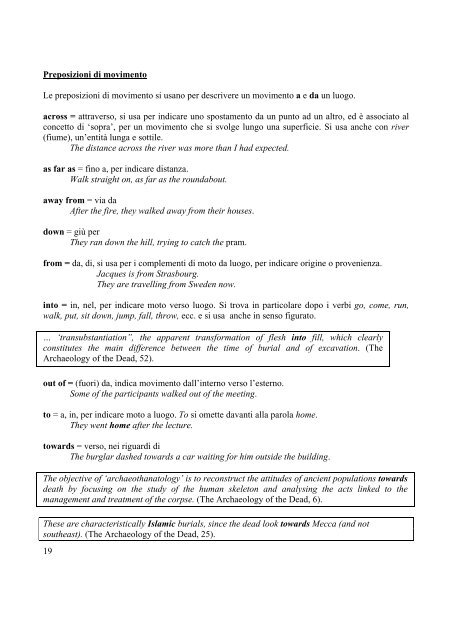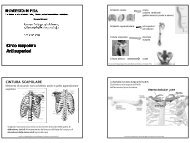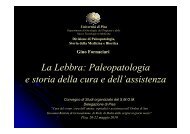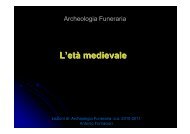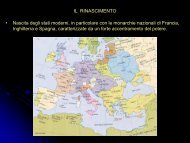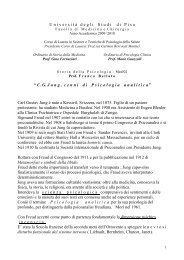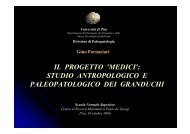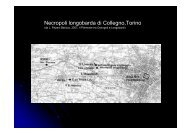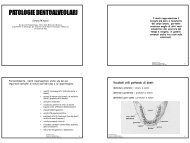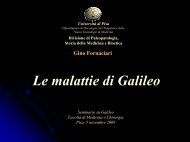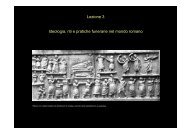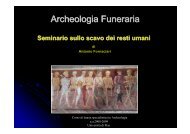Fondamenti della lingua inglese Laura Cignoni - Paleopatologia
Fondamenti della lingua inglese Laura Cignoni - Paleopatologia
Fondamenti della lingua inglese Laura Cignoni - Paleopatologia
Create successful ePaper yourself
Turn your PDF publications into a flip-book with our unique Google optimized e-Paper software.
Preposizioni di movimento<br />
Le preposizioni di movimento si usano per descrivere un movimento a e da un luogo.<br />
across = attraverso, si usa per indicare uno spostamento da un punto ad un altro, ed è associato al<br />
concetto di ‘sopra’, per un movimento che si svolge lungo una superficie. Si usa anche con river<br />
(fiume), un’entità lunga e sottile.<br />
The distance across the river was more than I had expected.<br />
as far as = fino a, per indicare distanza.<br />
Walk straight on, as far as the roundabout.<br />
away from = via da<br />
After the fire, they walked away from their houses.<br />
down = giù per<br />
They ran down the hill, trying to catch the pram.<br />
from = da, di, si usa per i complementi di moto da luogo, per indicare origine o provenienza.<br />
Jacques is from Strasbourg.<br />
They are travelling from Sweden now.<br />
into = in, nel, per indicare moto verso luogo. Si trova in particolare dopo i verbi go, come, run,<br />
walk, put, sit down, jump, fall, throw, ecc. e si usa anche in senso figurato.<br />
… ‘transubstantiation”, the apparent transformation of flesh into fill, which clearly<br />
constitutes the main difference between the time of burial and of excavation. (The<br />
Archaeology of the Dead, 52).<br />
out of = (fuori) da, indica movimento dall’interno verso l’esterno.<br />
Some of the participants walked out of the meeting.<br />
to = a, in, per indicare moto a luogo. To si omette davanti alla parola home.<br />
They went home after the lecture.<br />
towards = verso, nei riguardi di<br />
The burglar dashed towards a car waiting for him outside the building.<br />
The objective of ‘archaeothanatology’ is to reconstruct the attitudes of ancient populations towards<br />
death by focusing on the study of the human skeleton and analysing the acts linked to the<br />
management and treatment of the corpse. (The Archaeology of the Dead, 6).<br />
These are characteristically Islamic burials, since the dead look towards Mecca (and not<br />
southeast). (The Archaeology of the Dead, 25).<br />
19


